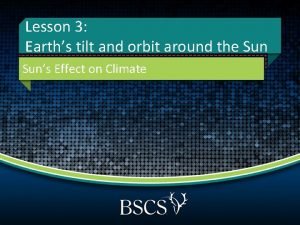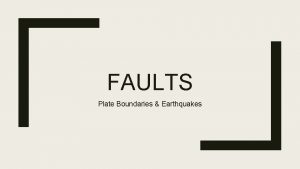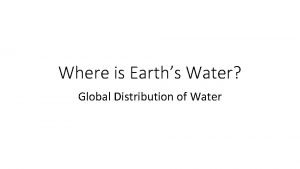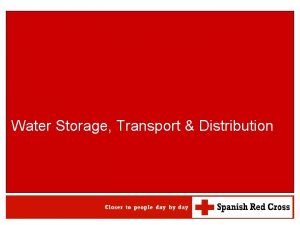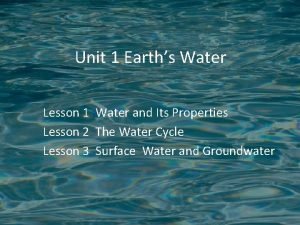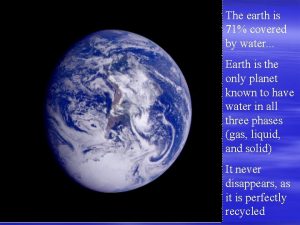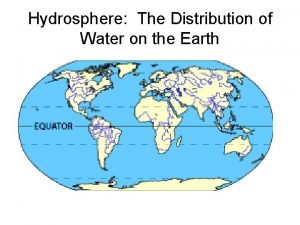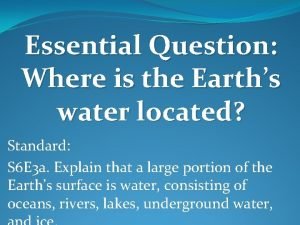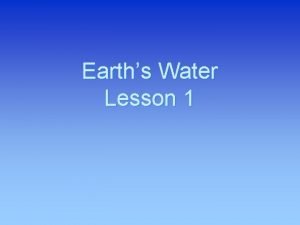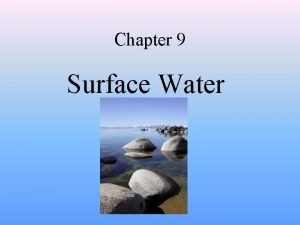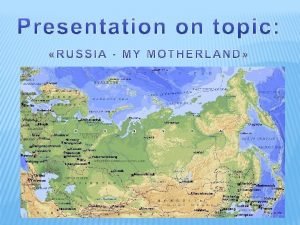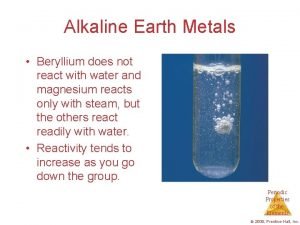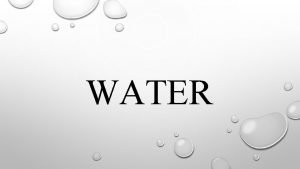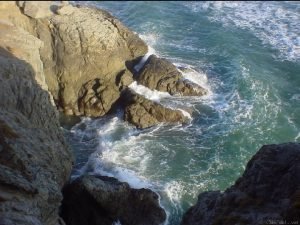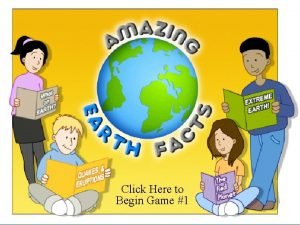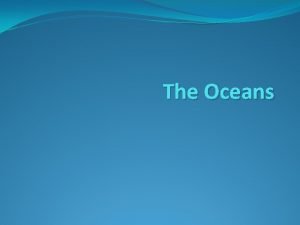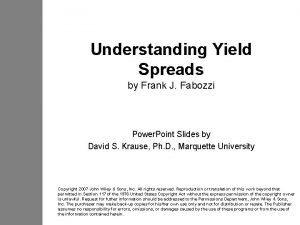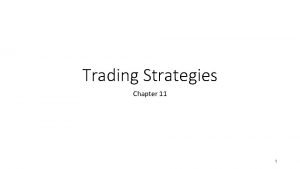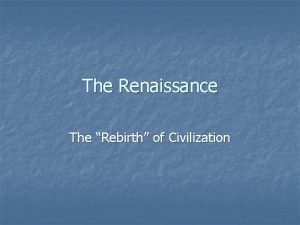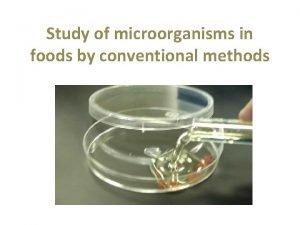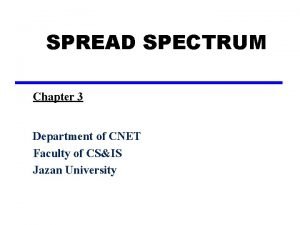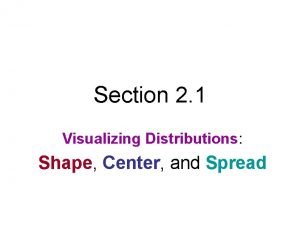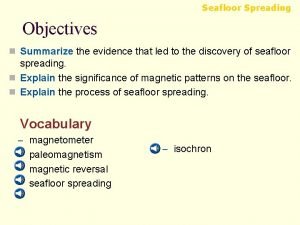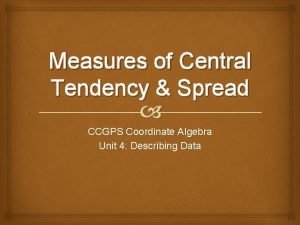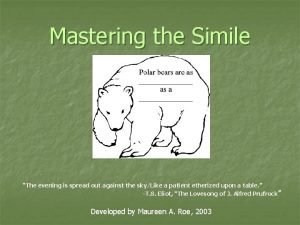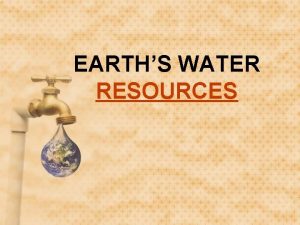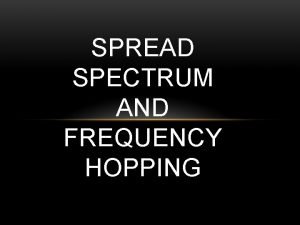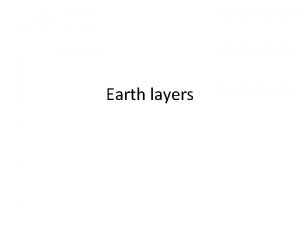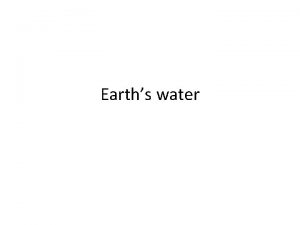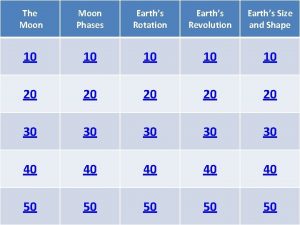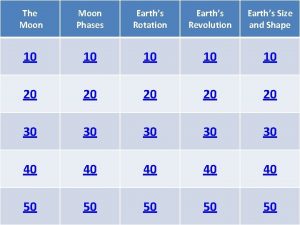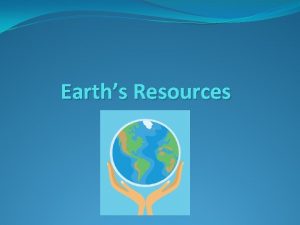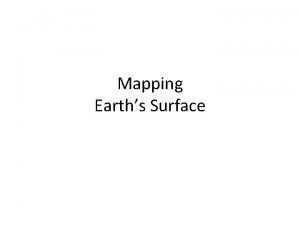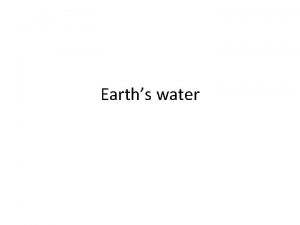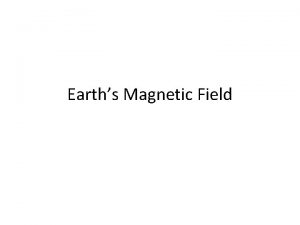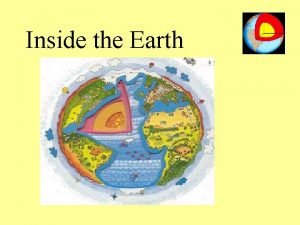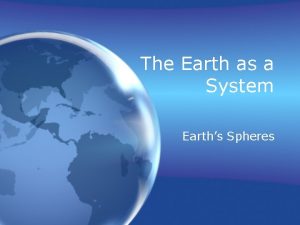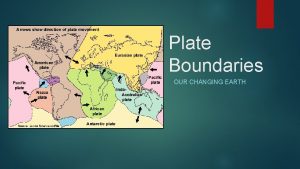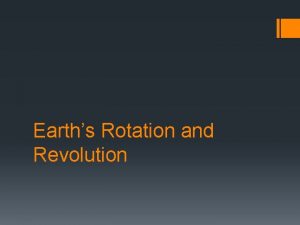Earths Water The water on earth is spread








































































































- Slides: 104

Earth’s Water

The water on earth is spread through the lithosphere, hydrosphere and the atmosphere layers.

The lithosphere is the solid, rocky crust covering the entire planet.

Water is a major factor in weathering and erosion of rocks and the rock cycle.

erosion

The hydrosphere is composed of all of the water on or near the earth. This includes the ocean, rivers, lakes, and even the moisture in the air.

97% of the earth's water is in the ocean.

The atmosphere contains water in the form of water vapor and precipitation.


OCEANS

Most of the earth is covered by ocean.

Oceans give us food and help keep the air temperature steady.

Arctic Ocean Pacific Ocean Atlantic Ocean Southern Ocean Pacific Ocean Indian Ocean

On the ocean bed there are mountains, valleys and even volcanoes.

Food provided by the ocean is fish, shellfish, and seaweed.

Kelp, a kind of seaweed, provides algin, which is used as a thickening in ice cream, salad dressing and cosmetics.

FYI There are estimated to be between 500, 000 and 5, 000 marine species not yet discovered.

It is important to us that the oceans stay healthy.

They drive our climate and weather.

Oceans provide a livelihood for many millions of people worldwide through fishing, energy and mineral resources, shipping, and leisure activities

Oceans pose threats through floods, tsunamis, storms, sea level change and coastal erosion.

More than half the world’s population lives near the sea.

Most waste eventually ends up in the oceans, with the result that marine pollution is a global problem - every part of every ocean is now affected.

Oceans play a big part in maintaining a healthy environment.

One of their jobs is to soak 2. up CO

The oceans absorb about 1/4 of the 2 CO we create when we burn fossil fuels.

If not for the oceans, we'd be in even worse trouble 2 with too much CO.

The oceans also soak up heat and distribute it more evenly around the Earth.

The top few meters of the ocean stores as much heat as Earth's entire atmosphere.

That means that as the planet warms, it's the ocean that gets most of the extra energy.

But if the ocean gets too warm, then the plants and animals that live in it must adapt--or die.

Algae and plankton are at the bottom of the food chain. Plankton includes many different kinds of tiny animals, plants or bacteria that just float and drift in the ocean.

Other tiny animals such as krill (sort of like little shrimp) eat the plankton.

Fish and even whales and seals feed on the krill.



In some parts of the ocean, krill populations have dropped by over 80 percent.

Krill like to breed in really cold water and as the ocean warms, their breeding slows down.

Scarcity of krill causes a decrease in food for all the ocean’s animals.

Another problem is the ocean is becoming more acidic.

What does this mean? Liquids are either acid or alkaline.

Normally, ocean water is less acidic than fresh water.

Unfortunately, as the ocean absorbs more and more carbon dioxide from the atmosphere, it becomes more acidic.

The alkalinity of the ocean is very important in maintaining the balance needed for animals to make protective shells.

If the water is too acidic, the animals may not be able to make strong shells.

Corals could also be affected, since their skeletons are made of the same shell-like material.

Coral reefs are an essential part of ocean ecosystems and are home to over 25% of all known species of marine life.

75% of the world’s coral reefs are already at risk.

Unless things change, more than 90% of coral reefs will at risk by 2030 and all the world’s reefs will be threatened by 2050.






Scientists have determined the main causes of threats to the oceans include climate change, overfishing, pollution and habitat loss.

Other factors include an increase in areas of low oxygen levels (42 areas in 1950 -783 sites today) and even dead zones, which areas with no oxygen in the water.








It is estimated that about two million tons of plastic enter the ocean each year from rivers.

More than half of this plastic is less dense than the water, meaning that it will not sink.

The Great Pacific Garbage Patch (GPGP) is the largest of the five offshore plastic accumulation zones in the world’s oceans.

It is located halfway between Hawaii and California.


The GPGP covers an estimated surface area of 1. 6 million square kilometers, an area twice the size of Texas or three times the size of France.




Large pieces of plastic deteriorate into small pieces called microplastics, usually as a result of sun exposure, waves, marine life and temperature changes.

These small pieces are very difficult to remove and are often mistaken for food by marine animals.

Besides the risk of eating bits of plastic, animals can become entangled in such items as fishing nets and 6 -pack soda rings.





Microplastics also pose a risk to humans.

Chemicals enter the body of the animal feeding on the plastic, and as the feeder becomes prey, the chemicals will pass to the predator making their way up the food web that includes humans.

Taking Water for Granted

Today nearly 1 billion people in the world don't have access to clean water.



Water scarcity is either the lack of enough water or lack of access to safe water.

That is approximately 1/3 of the world’s population or basically 1 in every eight people in the world.

31/2 million people die each year from water-related disease.

Every day 4, 500 children under the age of 5 years old die because of a sickness related to unclean water.

1 out of 6 people in the world has no access to clean water within a mile of their home.


Sometimes there is water, but not enough money to get it.

Other times, it is an area that lacks enough water for its population.

In a day, Europeans use about 50 gallons of water. American use 100 gallons.

Those living in sub. Saharan Africa use 2 -5 gallons per day.

Many people don’t realize how much water is needed to manufacture things we use.

It takes 10 gallons of water to make a single slice of bread, 713 gallons to produce a cotton t-shirt, 1, 000 gallons to make 1 gallon of milk, and 634 gallons to produce 1 burger.


Surface Tension





 Water and water and water water
Water and water and water water Earths layers foldable
Earths layers foldable Earths roation
Earths roation Whats a natural satellite
Whats a natural satellite Biome near the equator
Biome near the equator Most abundent element in earths crust
Most abundent element in earths crust Basalt
Basalt Whats earths moon called
Whats earths moon called Earth's thickest layer
Earth's thickest layer Earths early atmosphere contained
Earths early atmosphere contained Which layers together constitute the lithosphere
Which layers together constitute the lithosphere Earths major crustal plates
Earths major crustal plates Earths orbit seasons
Earths orbit seasons Brown earth soil profile
Brown earth soil profile Earths physical features
Earths physical features Earths honey
Earths honey Whats the name of earths moon
Whats the name of earths moon Continental drift theory notes
Continental drift theory notes Earths crust
Earths crust Earths interior
Earths interior What does the earths tilt cause
What does the earths tilt cause Description of earth's atmosphere
Description of earth's atmosphere Describe the true shape of earth's orbit
Describe the true shape of earth's orbit The emperor constantine i recycled sculpture
The emperor constantine i recycled sculpture What does earths tilt do
What does earths tilt do Earths boundaries
Earths boundaries Earths 4 spheres
Earths 4 spheres Hát kết hợp bộ gõ cơ thể
Hát kết hợp bộ gõ cơ thể Ng-html
Ng-html Bổ thể
Bổ thể Tỉ lệ cơ thể trẻ em
Tỉ lệ cơ thể trẻ em Gấu đi như thế nào
Gấu đi như thế nào Glasgow thang điểm
Glasgow thang điểm Hát lên người ơi
Hát lên người ơi Các môn thể thao bắt đầu bằng từ đua
Các môn thể thao bắt đầu bằng từ đua Thế nào là hệ số cao nhất
Thế nào là hệ số cao nhất Các châu lục và đại dương trên thế giới
Các châu lục và đại dương trên thế giới Công thức tiính động năng
Công thức tiính động năng Trời xanh đây là của chúng ta thể thơ
Trời xanh đây là của chúng ta thể thơ Cách giải mật thư tọa độ
Cách giải mật thư tọa độ Phép trừ bù
Phép trừ bù Phản ứng thế ankan
Phản ứng thế ankan Các châu lục và đại dương trên thế giới
Các châu lục và đại dương trên thế giới Thơ thất ngôn tứ tuyệt đường luật
Thơ thất ngôn tứ tuyệt đường luật Quá trình desamine hóa có thể tạo ra
Quá trình desamine hóa có thể tạo ra Một số thể thơ truyền thống
Một số thể thơ truyền thống Cái miệng nó xinh thế chỉ nói điều hay thôi
Cái miệng nó xinh thế chỉ nói điều hay thôi Vẽ hình chiếu vuông góc của vật thể sau
Vẽ hình chiếu vuông góc của vật thể sau Biện pháp chống mỏi cơ
Biện pháp chống mỏi cơ đặc điểm cơ thể của người tối cổ
đặc điểm cơ thể của người tối cổ V cc cc
V cc cc Vẽ hình chiếu đứng bằng cạnh của vật thể
Vẽ hình chiếu đứng bằng cạnh của vật thể Phối cảnh
Phối cảnh Thẻ vin
Thẻ vin đại từ thay thế
đại từ thay thế điện thế nghỉ
điện thế nghỉ Tư thế ngồi viết
Tư thế ngồi viết Diễn thế sinh thái là
Diễn thế sinh thái là Dạng đột biến một nhiễm là
Dạng đột biến một nhiễm là Bảng số nguyên tố
Bảng số nguyên tố Tư thế ngồi viết
Tư thế ngồi viết Lời thề hippocrates
Lời thề hippocrates Thiếu nhi thế giới liên hoan
Thiếu nhi thế giới liên hoan ưu thế lai là gì
ưu thế lai là gì Khi nào hổ con có thể sống độc lập
Khi nào hổ con có thể sống độc lập Khi nào hổ con có thể sống độc lập
Khi nào hổ con có thể sống độc lập Sơ đồ cơ thể người
Sơ đồ cơ thể người Từ ngữ thể hiện lòng nhân hậu
Từ ngữ thể hiện lòng nhân hậu Thế nào là mạng điện lắp đặt kiểu nổi
Thế nào là mạng điện lắp đặt kiểu nổi Water distribution on earth
Water distribution on earth Water storage on earth
Water storage on earth Lesson 1: earth’s water
Lesson 1: earth’s water How much water covers the earth
How much water covers the earth Hydrosphere images
Hydrosphere images Types of water on earth
Types of water on earth How water distributed on earth
How water distributed on earth Water flowing downslope along earth's surface
Water flowing downslope along earth's surface Natural source of water on earth
Natural source of water on earth Why beryllium not react with water
Why beryllium not react with water What is the most abundant compound on earth
What is the most abundant compound on earth Lord of all creation of water earth and sky
Lord of all creation of water earth and sky What percentage of earth is water
What percentage of earth is water Atoms examples
Atoms examples How much of the earth's surface is covered with water
How much of the earth's surface is covered with water Earth water percentage
Earth water percentage Ocean floor features
Ocean floor features Yield to worst
Yield to worst Hamburger filling and spread
Hamburger filling and spread Bond swap spread
Bond swap spread Lightweight truss construction
Lightweight truss construction Straddle strategy
Straddle strategy Long call short call
Long call short call Spread of christianity in europe
Spread of christianity in europe What started the renaissance
What started the renaissance Where did the renaissance begin
Where did the renaissance begin Pour plate method vs spread plate method
Pour plate method vs spread plate method Frequency-hopping spread spectrum
Frequency-hopping spread spectrum Frequency-hopping spread spectrum
Frequency-hopping spread spectrum Shape center and spread
Shape center and spread Isochron map of ocean-floor crust worksheet answers
Isochron map of ocean-floor crust worksheet answers How seeds spread
How seeds spread Carbon spreadbetting
Carbon spreadbetting Central tendency and spread homework
Central tendency and spread homework Spread simile
Spread simile Let us go out tonight
Let us go out tonight
























